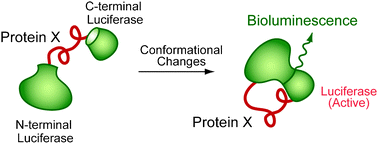Illuminating intracellular signaling and molecules for single cell analysis
Abstract
Fluorescent and bioluminescent

* Corresponding authors
a
Liverpool NIHR Pancreas Biomedical Research Unit (PBRU), Department of Molecular and Clinical Cancer Medicine, Institute of Translational Medicine, The University of Liverpool, Liverpool, UK
E-mail:
awais@liverpool.ac.uk
b
Department of Chemistry, School of Science, The University of Tokyo, Hongo, Bunkyo-ku, Tokyo 113-0033, and PRESTO, JST, Japan
E-mail:
ozawa@chem.s.u-tokyo.ac.jp
Tel: +81-3-5841-4351
Fluorescent and bioluminescent

 Please wait while we load your content...
Something went wrong. Try again?
Please wait while we load your content...
Something went wrong. Try again?
M. Awais and T. Ozawa, Mol. BioSyst., 2011, 7, 1376 DOI: 10.1039/C0MB00328J
To request permission to reproduce material from this article, please go to the Copyright Clearance Center request page.
If you are an author contributing to an RSC publication, you do not need to request permission provided correct acknowledgement is given.
If you are the author of this article, you do not need to request permission to reproduce figures and diagrams provided correct acknowledgement is given. If you want to reproduce the whole article in a third-party publication (excluding your thesis/dissertation for which permission is not required) please go to the Copyright Clearance Center request page.
Read more about how to correctly acknowledge RSC content.
 Fetching data from CrossRef.
Fetching data from CrossRef.
This may take some time to load.
Loading related content
